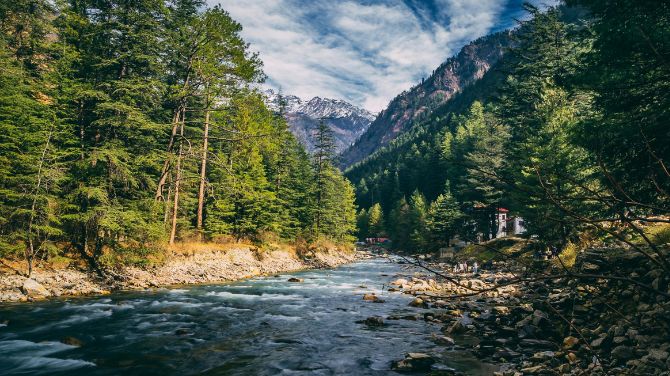Tanzania is one of Africa’s premier safari destinations, home to world-famous wildlife reserves, stunning landscapes, and the awe-inspiring Great Migration. With so much to offer, one of the most common questions travelers ask is: “What is the best time to visit Tanzania for safari?” The answer depends on what you want to see, your budget, and your tolerance for different weather conditions.
In this detailed guide, we’ll help you choose the ideal time for your Tanzanian adventure, exploring the seasons, wildlife patterns, and special events that make each period unique.
Tanzania’s Safari Seasons at a Glance
Tanzania experiences two main seasons: the dry season and the wet (or green) season. Each offers unique safari experiences.
1. Dry Season (June to October) – The Peak Safari Season
Weather: Cool, dry, and sunny with clear skies.
Temperature: Daytime 20-30°C (68-86°F); cooler nights.
Wildlife Viewing: The absolute best time to visit Tanzania for safari—animals gather near waterholes, making them easier to spot.
Key Advantages:
Best chance to witness the Great Wildebeest Migration in the Serengeti (June–July for river crossings, September–October for northern Serengeti).
Lower risk of malaria due to fewer mosquitoes.
Comfortable game drives with dry roads.
Considerations:
Higher prices due to peak tourist demand.
Popular parks can get crowded.
2. Short Rains (November to December) – Low Season Charm
Weather: Short afternoon showers; landscape turns green.
Temperature: Warm days, occasional rain.
Wildlife Viewing: Animals still visible but slightly harder to track.
Advantages:
Fewer tourists and better prices.
Beautiful green landscapes, ideal for photographers.
Migratory bird species arrive, making it a paradise for birdwatchers.
Considerations:
Rain can disrupt travel but generally doesn’t last all day.
3. Green Season (January to March) – Calving Season
Weather: Mostly dry with occasional light rain.
Temperature: Warm days around 28°C (82°F).
Wildlife Viewing: Ideal time to witness wildebeest calving in the Southern Serengeti.
Advantages:
Dramatic predator-prey interactions as lions, cheetahs, and hyenas stalk newborn calves.
Stunning lush landscapes with clear skies.
Fewer visitors, more affordable lodges.
Considerations:
Calving is localized—best viewed in Ndutu area of Serengeti.
4. Long Rains (April to May) – The Quietest Time
Weather: Heavy rains, muddy roads, and occasional lodge closures.
Temperature: Warm but very wet.
Wildlife Viewing: Animals still present but harder to access.
Advantages:
Rock-bottom safari prices and exclusive lodge deals.
Verdant scenery with blooming flora.
Excellent birdwatching opportunities.
Considerations:
Game drives may be limited due to impassable roads.
Best for seasoned travelers or those on a budget.
Great Wildebeest Migration: Timing Your Trip
For many visitors, witnessing the Great Migration is the highlight of their Tanzanian safari. Over 1.5 million wildebeest, accompanied by zebras and gazelles, move across the Serengeti and into Kenya’s Masai Mara in search of fresh grazing.
| Month | Migration Location | Key Event |
|---|---|---|
| Jan-Mar | Ndutu (Southern Serengeti) | Calving season |
| Apr-May | Central Serengeti | Herds begin moving north |
| Jun-July | Western Serengeti/Grumeti | River crossings begin |
| Aug-Oct | Northern Serengeti/Mara River | Dramatic crossings into Kenya |
| Nov-Dec | Eastern & Southern Serengeti | Returning south |
If your dream safari involves witnessing the migration, timing your visit around these months is crucial.
Best Time for Different Wildlife and Safari Activities
Here’s a breakdown of the best time to visit Tanzania for safari depending on your specific interests:
Big Five Viewing (Lion, Leopard, Elephant, Rhino, Buffalo): June to October (Dry Season)
Birdwatching: November to April (Migratory Birds Arrive)
Great Migration River Crossings: June to October
Wildebeest Calving: January to March
Family Safaris: June to October for easier travel conditions
Top National Parks and Their Ideal Visiting Times
Serengeti National Park
Best: June to October for wildlife viewing.
Calving: January–March in Southern Serengeti.
Ngorongoro Crater
Year-round destination, but dry months (June–October) offer clearer roads and views.
Tarangire National Park
Best: July to October when elephants gather in large numbers.
Lake Manyara National Park
Best: Dry season, but excellent birdwatching in the wet season.
Ruaha National Park & Selous (Nyerere NP)
Best: June to October (remote and rewarding for experienced safari-goers).
Weather Tips and Packing Advice
Regardless of the month you choose, here’s what to keep in mind:
Dress in Layers: Mornings can be chilly, but midday is warm.
Neutral Colors: Helps you blend in and keeps you cool.
Rain Gear: If traveling during the green or rainy seasons.
Sun Protection: Sunglasses, sunscreen, and hats are essential.
Budget Considerations: High vs. Low Season
The best time to visit Tanzania for safari also affects costs:
High Season (June–October):
Higher lodge rates and park fees.
Advanced booking recommended.
Low/Shoulder Season (April–May, November–December):
Significant savings.
Potential for private safari experiences.
Cultural Events and Additional Attractions
In addition to wildlife safaris, timing your trip to coincide with cultural events adds depth to your visit:
Kilimanjaro Marathon: February in Moshi—ideal for active travelers.
Zanzibar International Film Festival: July—perfect post-safari relaxation.
Local Market Festivals: Year-round in Arusha, Moshi, and Dar es Salaam.
Many travelers also combine safaris with Zanzibar beaches for a well-rounded Tanzanian holiday.
Conclusion: When is the Best Time to Visit Tanzania for Safari?
The truth is that there’s no single best time to visit Tanzania for safari—it depends on your priorities:
For first-timers who want guaranteed wildlife sightings and comfortable conditions: June to October is ideal.
For those on a budget or seeking fewer crowds: November to March offers excellent opportunities at lower costs.
For migration or calving enthusiasts: January to March or July to September are must-visit periods.
By understanding the seasons, wildlife patterns, and weather conditions, you can plan the perfect Tanzanian safari tailored to your dreams and expectations.














Leave a comment